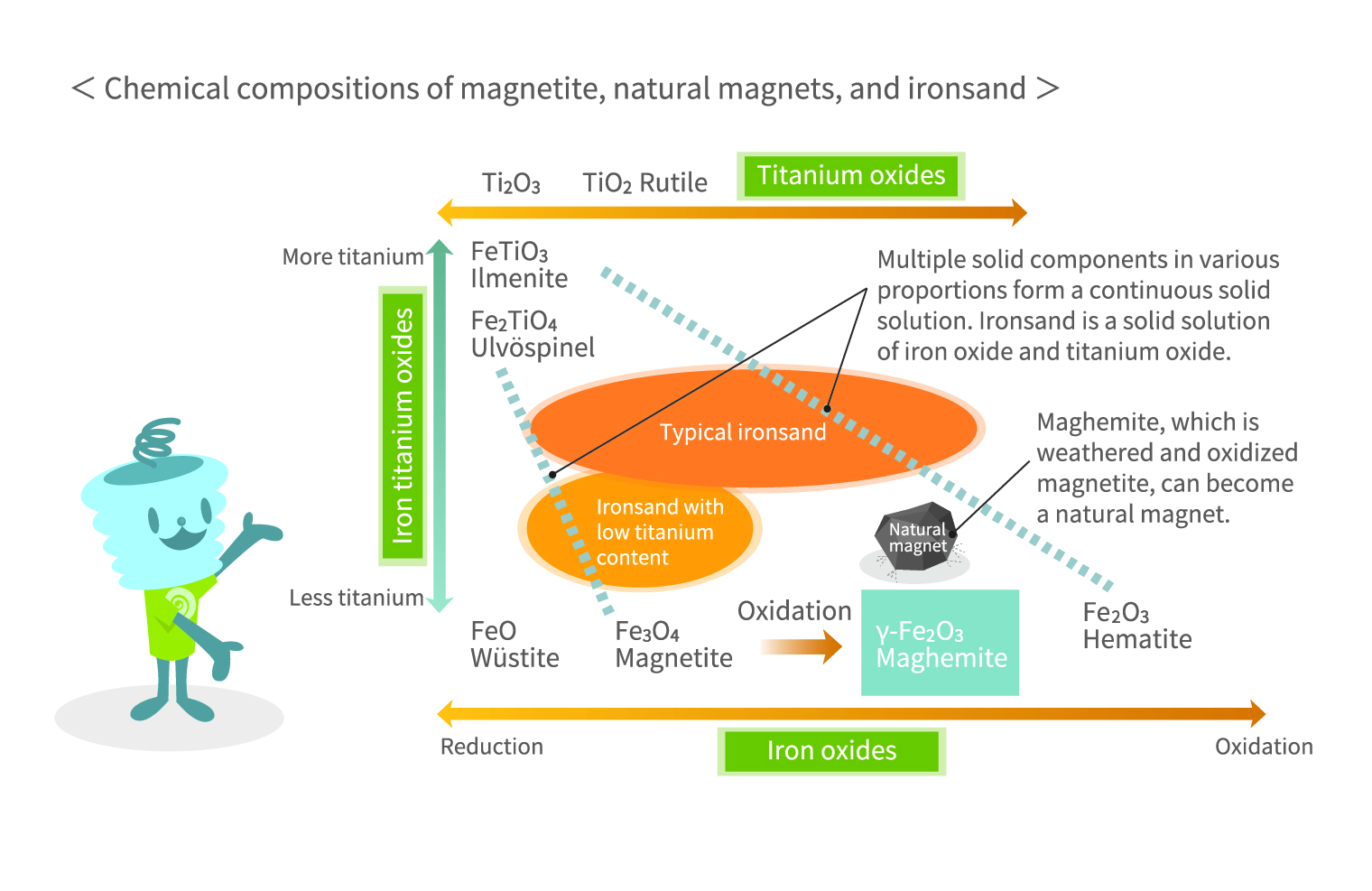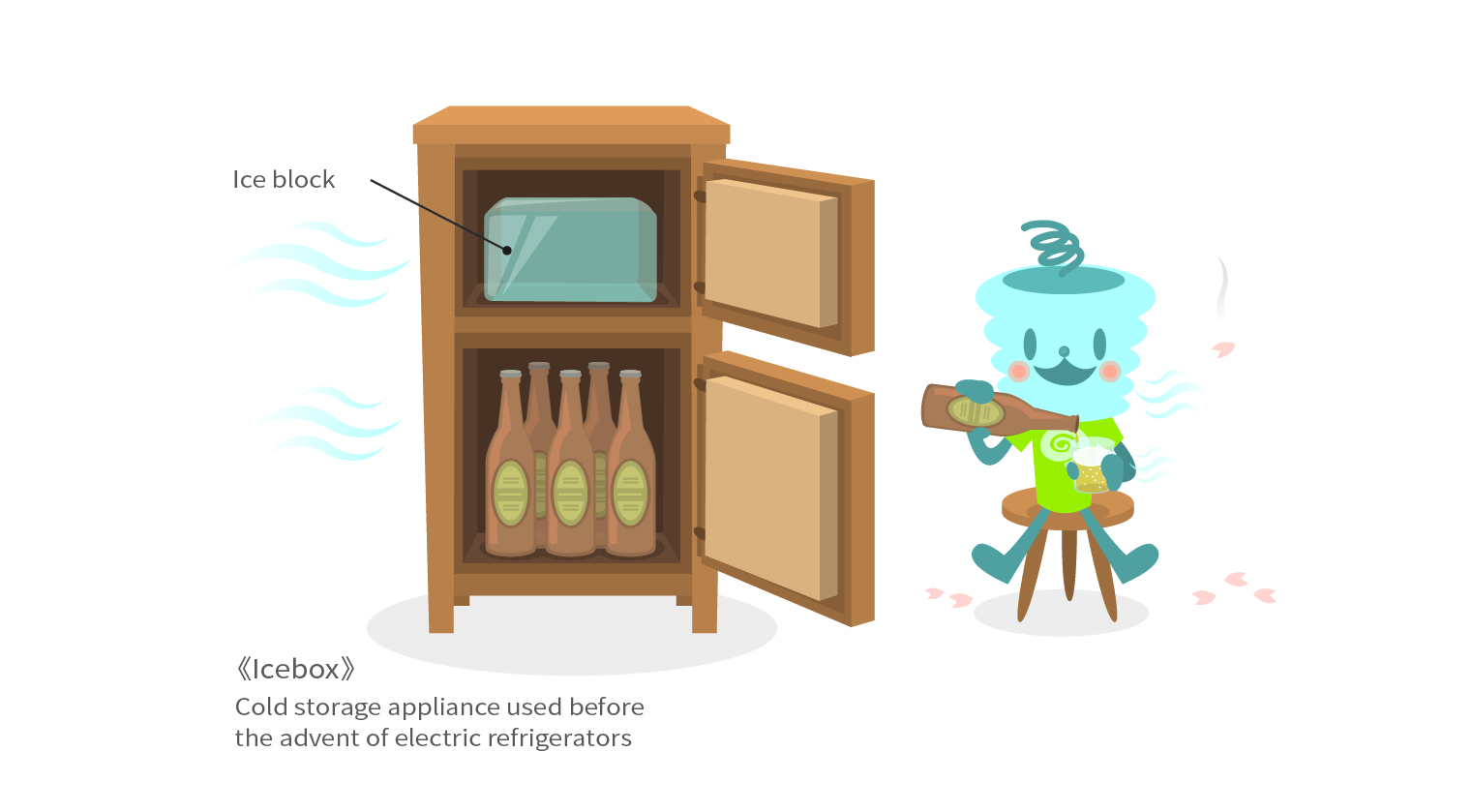The Wonders of Electromagnetism
Powerful Magnets Boost Efficiency of Wind Turbines

There is a plant group collectively known as Clematis. Among its species is one native to Japan called Kazaguruma. Its name derives from its eight petals (sepals) resembling a toy pinwheel, which is known by the same name in Japanese. Traditionally, a windmill refers to a machine that draws mechanical power from the wind, but modern windmills, also known as wind turbines, utilize the wind to generate electricity and power a variety of other needs.
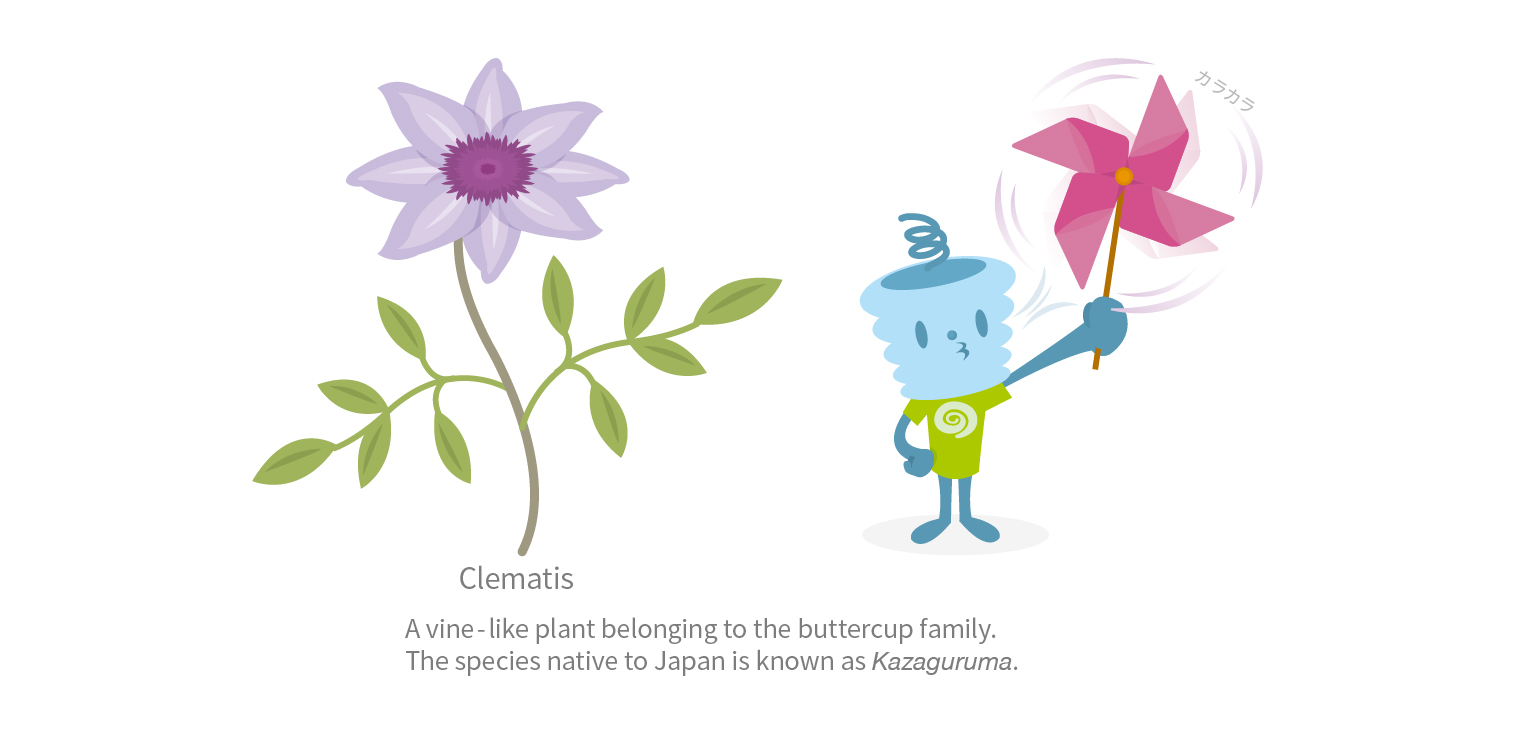
Wind-generated electricity was already in operation during the early Showa era in Japan
The “mill” in windmill refers to a grindstone or millstone because most windmills in Europe were originally used for milling wheat.
Windmills are said to have originated in the Islamic world around the seventh century and underwent their own unique development in Europe from the twelfth century onwards. There are two types of European windmills: box windmills and tower windmills. The sails of a windmill do not face a fixed direction; instead, they incorporate mechanisms allowing them to adjust their orientation in response to the wind direction. A box windmill rotates the entire structure, but such a design was difficult to scale up. This led to the development of the tower windmill, which rotates only the upper part of the structure—somewhat similar to a revolving restaurant atop a high-rise hotel.
Windmills vary in design across regions. The Dutch windmills—like the Kindeldijk Windmills, a UNESCO World Heritage Site—are tower windmills with a curvy, elegant design and were primarily used for pumping water. A quarter of the Netherlands’ territory is reclaimed land lying below sea level. The country gradually expanded its territory by constructing extensive dikes and employing numerous windmills to pump out seawater.
In Japan, windmills began to be utilized during the Meiji era (1868 to 1912), only in small-scale applications like lifting water for agricultural irrigation. By the early Showa era, improved versions of these small windmills were being used for electrical power generation. A generator relies on electromagnetic induction—a phenomenon where moving magnets near coils induce an electric current—to produce electricity. Magnets are attached to the windmill’s shaft, and coils surround the magnets. The wind drives the rotation of the magnets, and electricity is drawn from the coils. Wind power generators with capacities ranging from 200 to 300 watts played a crucial role in regions like the pioneering farms in the inlands of Hokkaido and other areas where electricity supply was lagging.
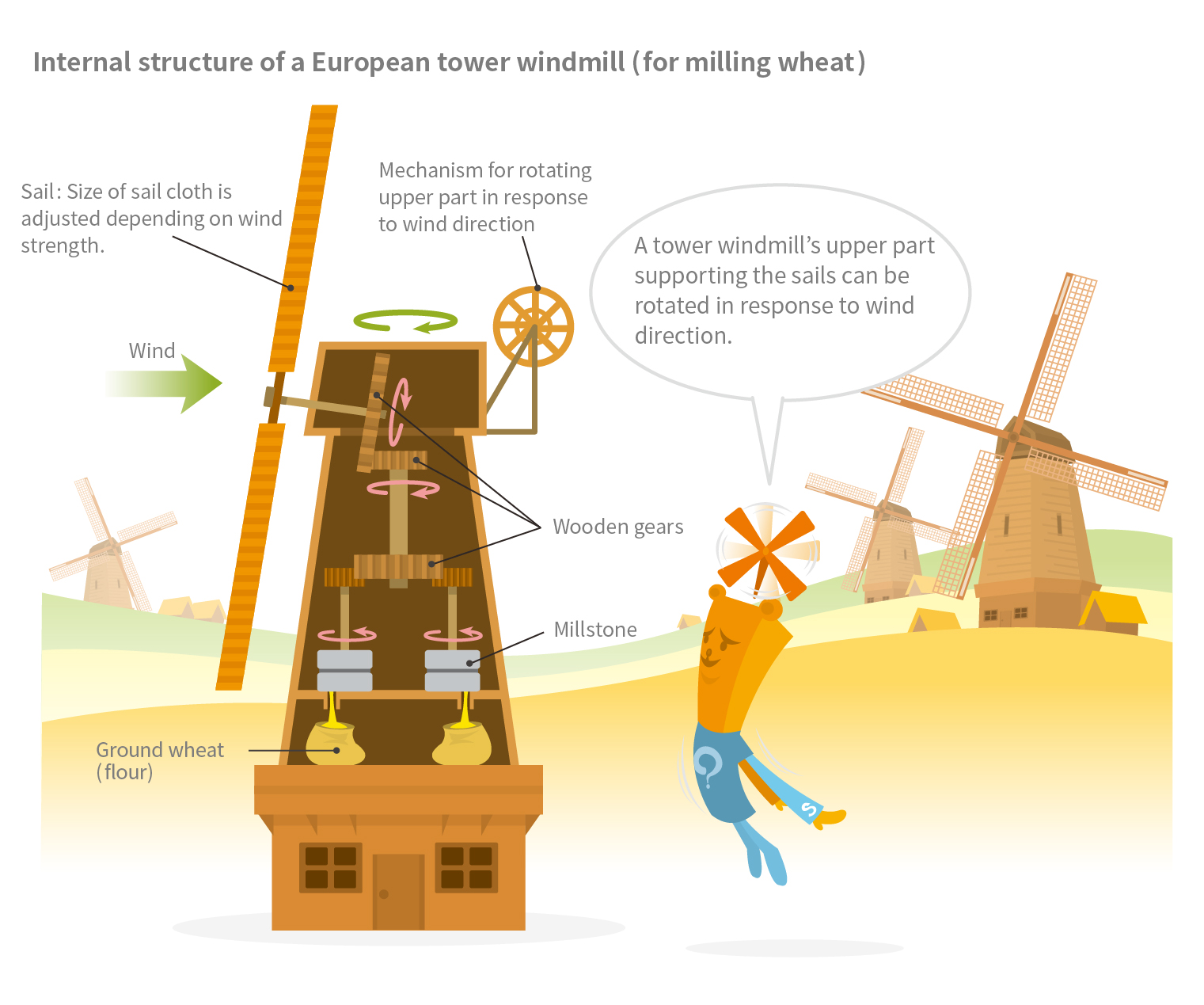
Aircraft propeller technology enhances efficiency of large-scale wind turbines
While there are various types of wind turbines for power generation, they are broadly categorized into two styles: those with a horizontal axis of rotation and those that are vertical. Examples of horizontal-axis turbines include the four-sail Dutch type, the multi-blade type used on American ranches, and the modern propeller type with two to three blades. Vertical-axis turbines include the Darrieus type, which features a uniquely shaped ring, and the Savonius type, which has a cylindrical rotor.
Vertical-axis turbines offer the advantage of being able to spin regardless of wind direction. However, horizontal-axis propeller turbines have become the predominant choice in wind power generation today due to their superior efficiency. In propeller turbines, the plane of blade rotation must constantly face the wind, a task facilitated by control mechanisms equipped with sensors. Better yet, aircraft propeller technology has significantly boosted the efficiency of these turbines. While a wind turbine’s ability to capture the wind’s kinetic energy is theoretically limited to around 60% even under ideal conditions, advanced propeller turbines can extract as much as 45%, demonstrating notable efficiency gains.
In propeller wind turbines, a box-like compartment called a nacelle is situated at the center of the turbine, housing a gearbox and a generator. Similar to how a bicycle’s dynamo-driven light brightens with increasing speed, higher rotation speeds translate to increased electricity production. Despite the seemingly slow blade rotation in large wind turbines, the rotation is converted to higher speeds using gearboxes before electricity generation. Gearboxes, however, have disadvantages like noise and friction, which can compromise efficiency and lead to failures. To overcome these challenges, wind turbines are increasingly adopting a gearless approach, eliminating the gearbox and utilizing a multipole synchronous generator with a rotating magnetic field and an inverter.
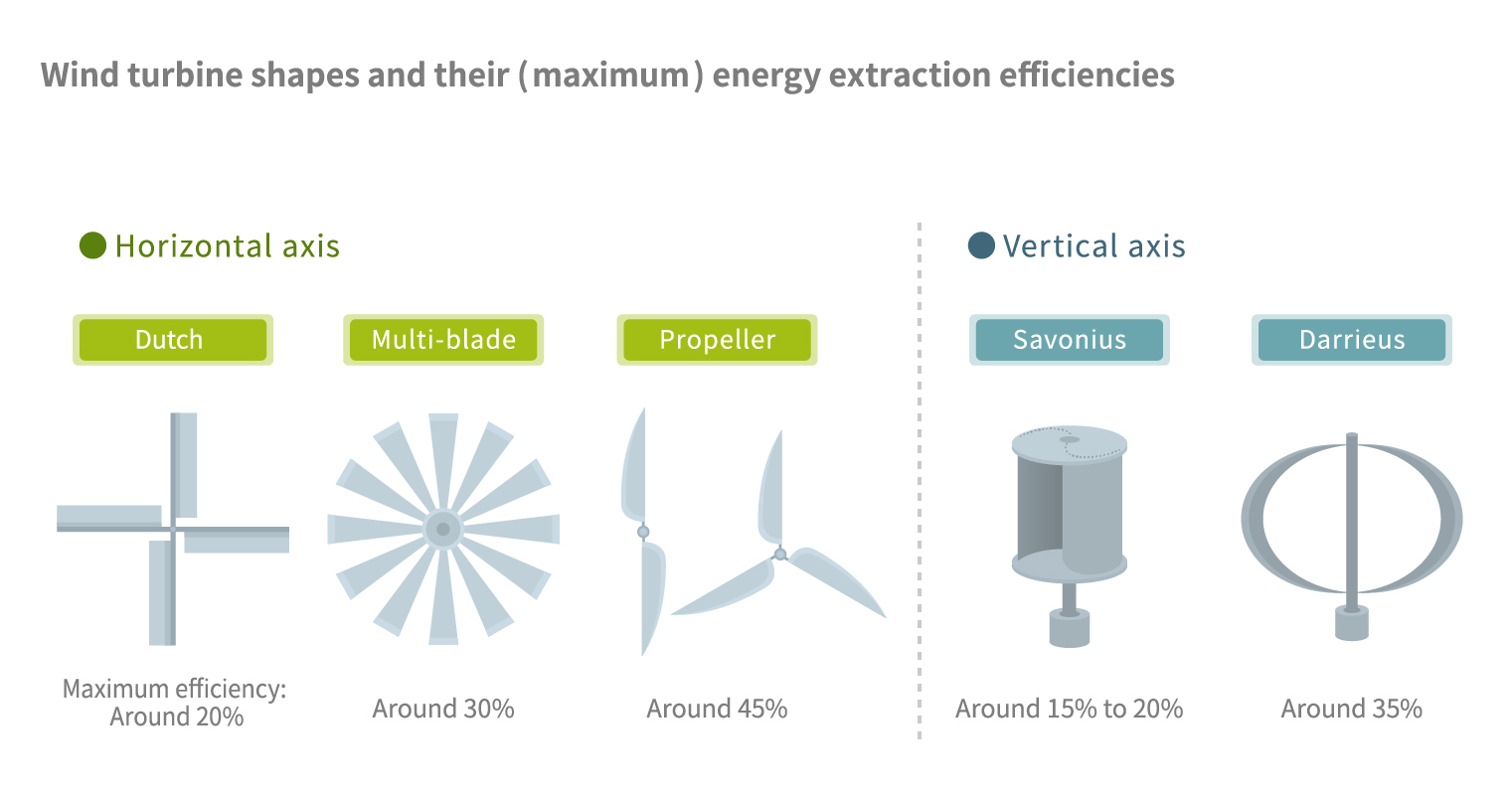
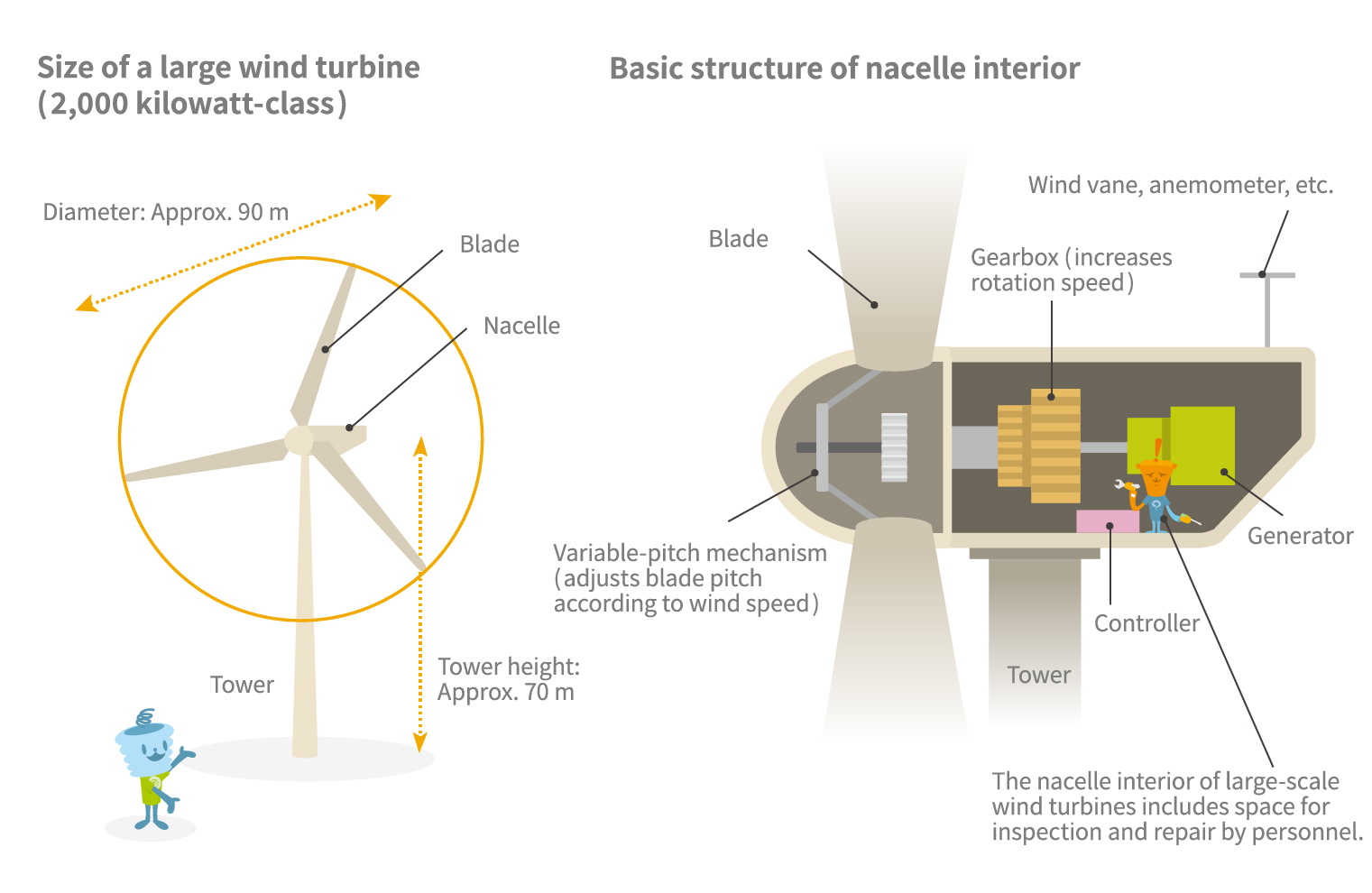
A gearless wind turbine uses a permanent magnet multipole synchronous generator. When a magnet is moved towards or away from a coil, it generates an electromotive force within the coil. By arranging multiple magnets on the rotor to create multipolarity, high output can be achieved even at low rotational speeds. Utilizing powerful permanent magnets, such as neodymium magnets found in the drive motors of hybrid and electric vehicles (e.g., TDK’s NEOREC series), it becomes increasingly feasible to achieve compact size and high output in wind power generators.
A potential key to Japan’s decarbonization: Offshore wind power
Wind energy is directly proportional to the area through which it passes and is proportional to the cube of the wind speed. Since winds tend to be stronger at heights than at the surface, larger wind turbines are more efficient. Wind Farm Tsugaru, operational since 2020 in Tsugaru City, Aomori Prefecture, is one of Japan’s largest wind farms, with 38 massive turbines boasting a generating capacity of 3.2 megawatts each as of December 2023. Construction is underway for even larger, 4.3-megawatt turbines at the Nikaho Wind Power Plant in Nikaho Kogen, Akita Prefecture, slated to begin operating in January 2024.
In Japan, where land is at a premium, locations suitable for wind farms are limited. Additionally, the construction of large wind turbines requires extensive support infrastructure, including roads for transporting oversized materials and construction equipment. No matter how favorable the wind conditions, building wind turbines in rugged, mountainous terrain can present significant challenges. This is where offshore wind power generation comes into play. Offshore sites offer consistently stronger winds than onshore locations and eliminate issues like noise pollution. In 2020, the Japanese government unveiled its Offshore Wind Industry Vision, which sets a target of achieving a maximum capacity of 45 gigawatts by 2040. In January 2023, the nation’s first commercial-scale offshore wind farm, with a combined capacity of 138 megawatts, commenced operations in the Akita Port and Noshiro Port areas of Akita Prefecture.
Proposals have been made for floating wind turbines, where large turbines are floated like buoys and secured to the seabed with cables or constructed on enormous raft-like platforms in offshore waters. The floating design allows for construction in offshore waters exceeding 50 meters in depth, a significant benefit in a country where shallow coastal regions are limited. In January 2024, Japan’s first floating offshore wind farm will begin commercial operations off the Goto Islands in Nagasaki Prefecture.
Further expansion of offshore wind power generation hinges on cost reduction, particularly those related to turbine construction. In October 2023, Japan’s Ministry of Economy, Trade and Industry (METI) designated four regions to validate technologies designed to reduce the cost of float-type offshore wind power, including off the coasts of Yurihonjo City and Nikaho City in Akita Prefecture. By 2030, pilot projects for floating wind power with large turbines will be carried out in two of these areas.
While Japan's mountainous terrain doesn’t favor onshore wind power, being a maritime nation surrounded by water on all sides has its advantages. Championing offshore wind power as a national project could help decarbonize the entire Japanese archipelago. The past decade has witnessed rapid progress in wind power technology, including the introduction of powerful neodymium magnets in multipole synchronous generators. These circumstances present Japan with a prime opportunity to leap forward as a leading nation in wind power generation.
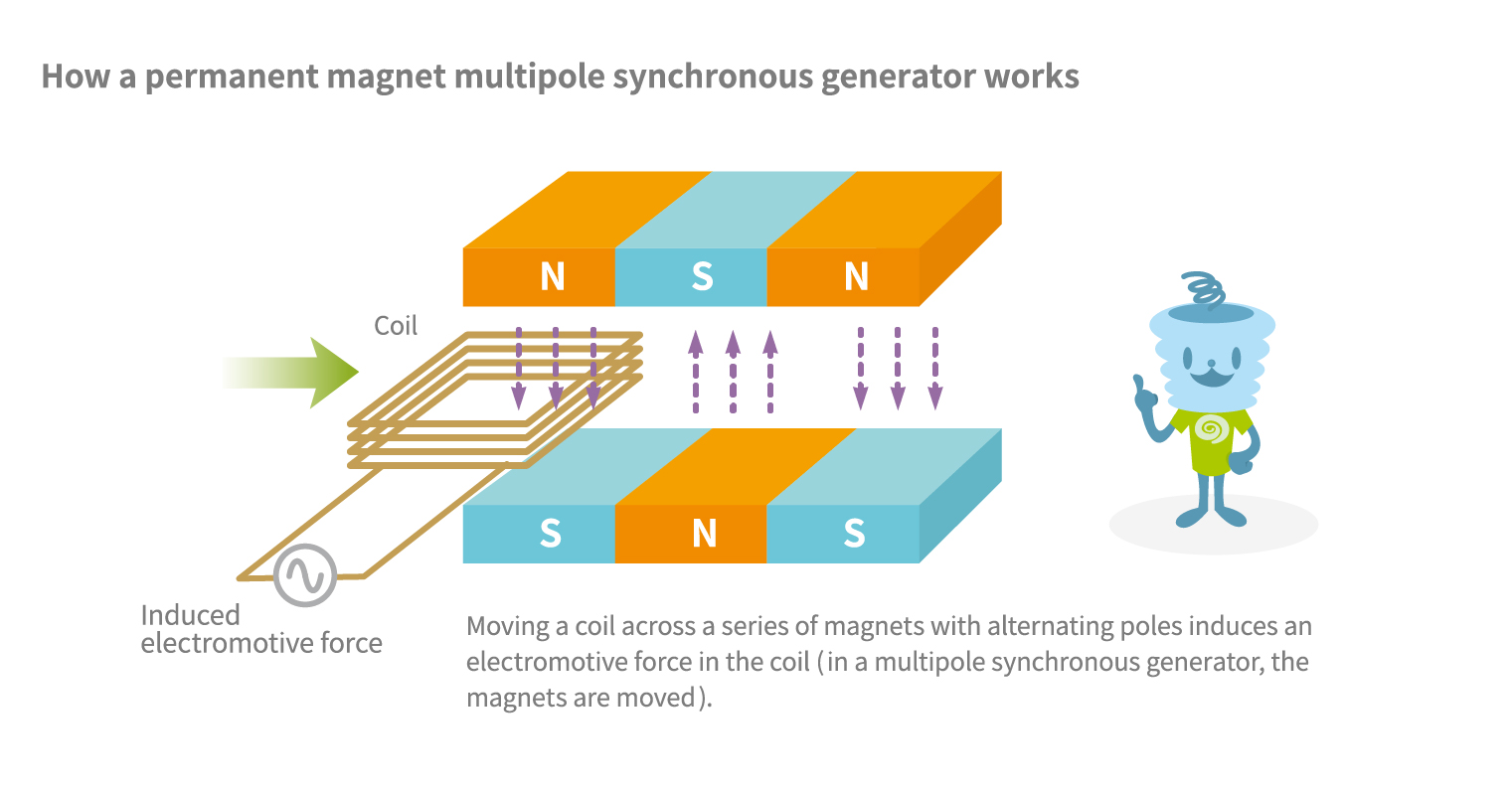
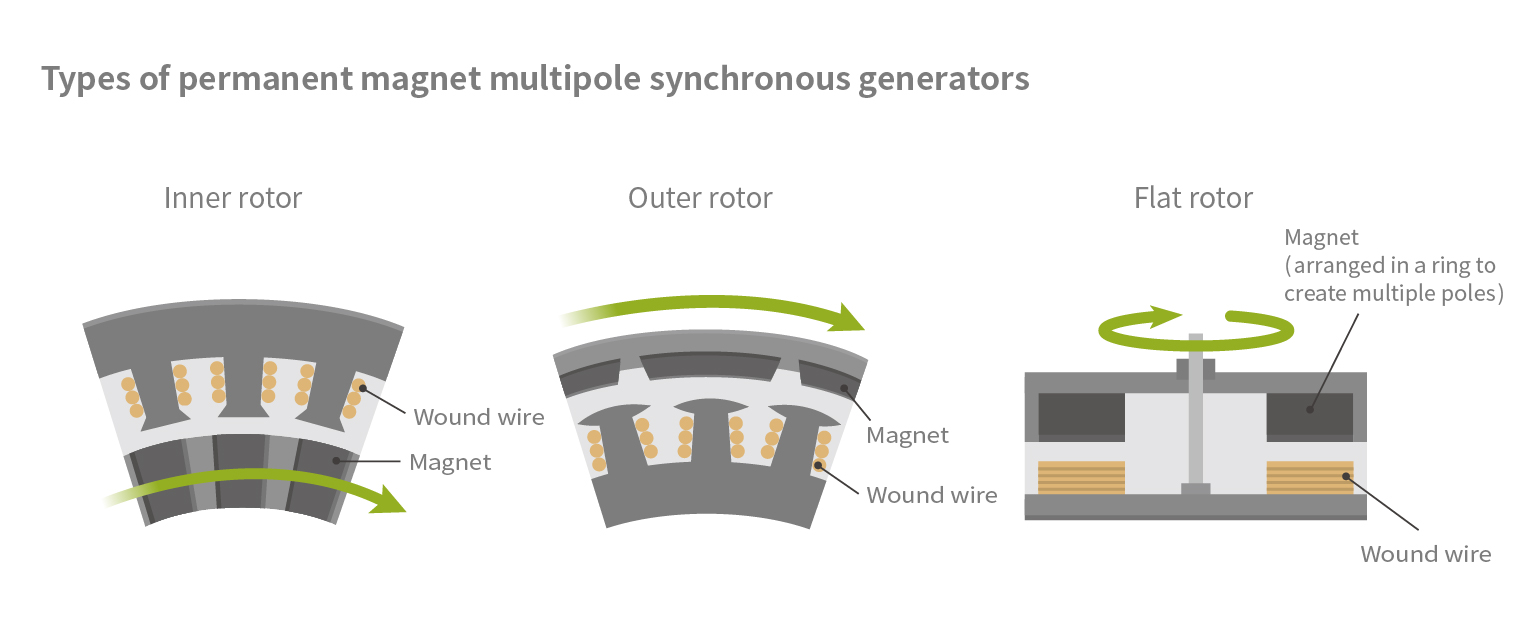
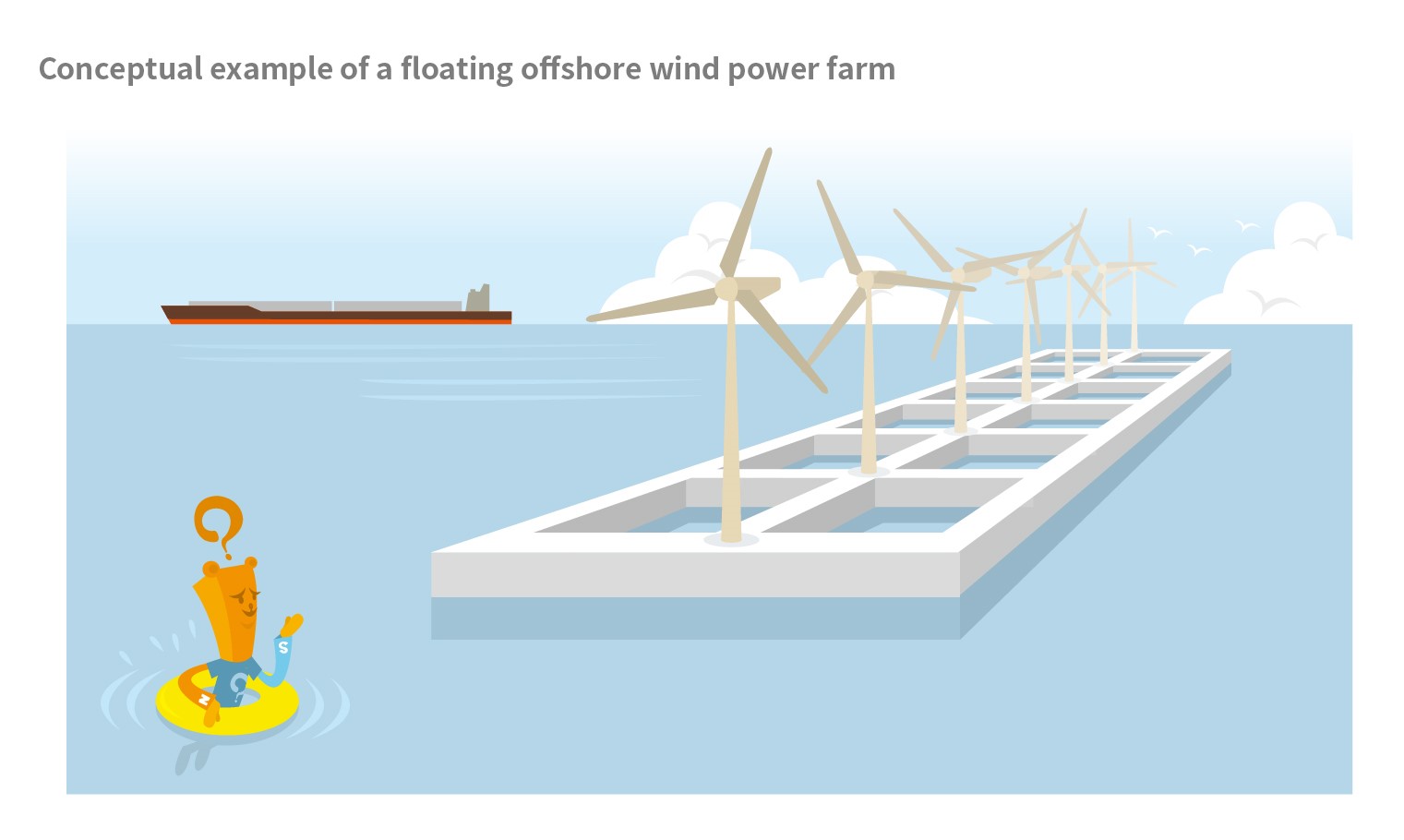
TDK is a comprehensive electronic components manufacturer leading the world in magnetic technology



